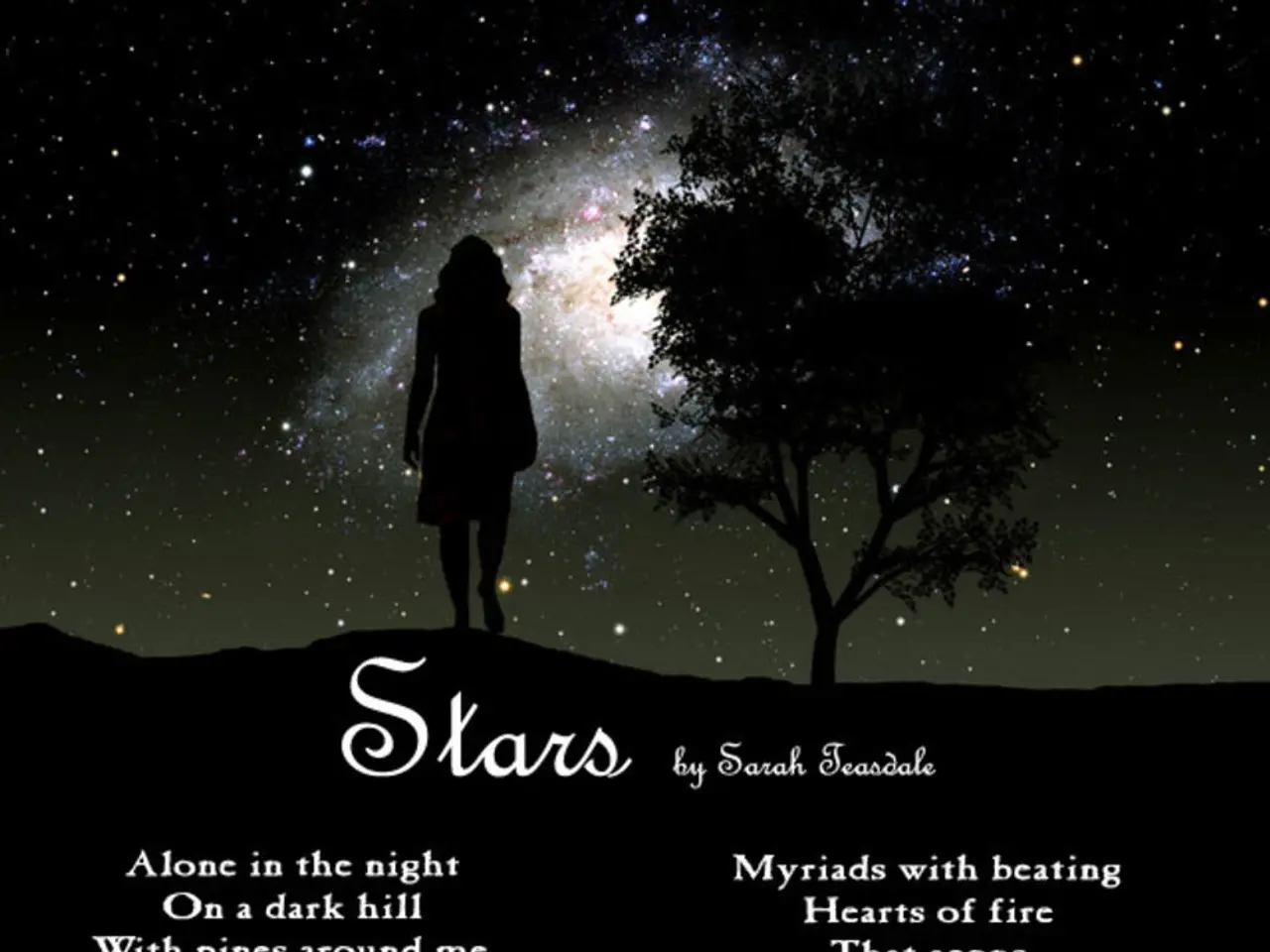Understanding the Mechanics of Poetry Composition
In the world of poetry, sound plays a crucial role in creating specific feelings and atmospheres. Poets skillfully employ various sound devices, or techniques, to achieve this musicality, enhance mood, and evoke emotions. Here are some of the main sound devices and examples of their use:
Rhyme
Rhyme, the repetition of similar sounding words at the end of lines, is one of the most recognizable sound effects in poetry. For instance, Robert Frost's famous line, "Whose woods these are I think I know," demonstrates this device.
Rhythm
Patterns of stressed and unstressed syllables, known as rhythm, also play a significant role in poetry. Shakespeare's "To BE or NOT to BE" is a classic example of iambic pentameter, a rhythmic pattern that consists of five 'da-DUM' beats per line.
Meter
Structured rhythm with specific patterns of syllables is called meter. Trochaic meter, for example, is characterized by a stressed syllable followed by an unstressed one, as seen in Blake's "TYger TYger, BURNing BRIGHT."
Alliteration
Alliteration, a form of consonance where repeated letters appear only at the beginning of the words, can create a gentle, hushed effect. An example of alliteration is "Whispering winds through weeping willows."
Assonance
Assonance, the repetition of vowel sounds within words, can sometimes be more subtle than the repetition of consonants. The repetition of vowel sounds in "murmuring melodies" creates a melodic quality.
Consonance
Consonance, the repetition of consonant sounds, typically at the end or middle of words, can add a musical quality to poetry. An example of consonance is "The light in the night was bright."
Onomatopoeia
Onomatopoeia, words that imitate natural sounds, can enhance the auditory experience of poetry. Words like "buzz," "murmur," and "clang" mimic actual sounds. The "zz" in the word buzz kind of sounds like the noise a bee makes, an example of onomatopoeia.
Refrain
A refrain is a repeated line or phrase throughout the poem. An example of a refrain is "Quoth the Raven, 'Nevermore.'"
Euphony
Euphony refers to the use of smooth, pleasant sounds to create harmony in poetry. "Season of mists and mellow fruitfulness" is an example of euphony.
Cacophony
Cacophony, on the other hand, uses harsh, discordant sounds for effect. An example of cacophony can be found in Hopkins' "With throats unslaked, with black lips baked."
Poets skillfully combine these devices to enhance the auditory experience of poetry and deepen its emotional impact. For example, Lewis Carroll's nonsensical poem "Jabberwocky" effectively communicates a scary atmosphere through the use of made-up words and nonsensical phrases, as well as onomatopoeic words like "slithy," "frumious," and "Bandersnatch," which sound angry and scary when said aloud.
Thus, the use of sound effects in poetry serves not only to create a pleasing auditory experience but also to evoke specific emotions and atmospheres, making poetry a truly sensory experience.
In the realm of journalism, the use of sound devices is just as crucial to create specific feelings and atmospheres. Writers skillfully employ various techniques, similar to those in poetry, to achieve this musicality, enhance mood, and evoke emotions.
For instance, a fashion editor might employ alliteration in a headline like "Fall Fashion Flourishes with Fabulous Fur." Similarly, a food critic might use onomatopoeia to describe a dish as "crunchy, crispy, and delightful."
In real estate articles, a writer may use a refrain to emphasize a point, such as "Location, location, location." Likewise, a travel writer might use rhyme to make a journey more memorable, like "From sandy beaches to towering peaks, this adventure never lets you sleep."
Home and garden writers often use assonance to create a soothing mood, such as "Whispering willows and murmuring streams create a tranquil retreat." In a pet column, the writer might use consonance to highlight the shared love for a beloved pet, "The purr in the dark and the wag in the park, our furry friends are the heart's embrace."
The use of sound effects in writing serves not only to create a pleasing auditory experience but also to evoke specific emotions and atmospheres, making journalism a truly sensory experience.




